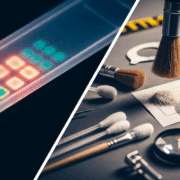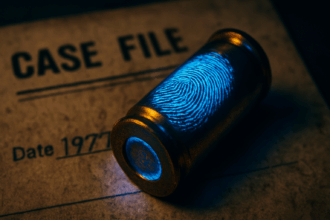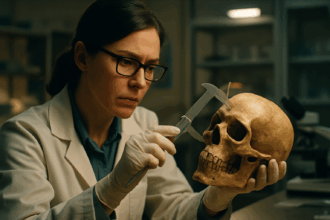Estimating the time since death is a fundamental aspect of forensic investigations. However, when a body is discovered submerged in water, traditional methods often fall short. Recent advancements in forensic science
The Challenge of PMSI Estimation
Estimating the time since death, particularly for bodies found in water, is fraught with challenges. The post-mortem submerged interval (PMSI) is influenced by various factors:
- Water Temperature: Cold water slows down decomposition, while warmer water accelerates it.
- Salinity and Depth: Different water types and depths affect the preservation and decomposition of the body.
- Presence of Bacteria and Scavengers: Microbial activity and scavenging animals can alter the decomposition process significantly.
Traditional methods, such as observing insect activity or measuring body temperature, are often unreliable in aquatic environments. This has driven researchers to explore alternative approaches like bone proteomics.
Bone Proteomics: A Revolutionary Approach
Bone proteomics involves analyzing the proteins within bones to determine how long a body has been submerged. Proteins in bones are more stable and protected compared to those in soft tissues, making them ideal for such analyses. Researchers have identified specific proteins that degrade at predictable rates, which can be used to estimate PMSI.
Key Proteins in Bone Analysis
- Fructose-Bisphosphate Aldolase A: This protein’s concentration decreases over time in submerged bones, making it a reliable marker for PMSI estimation.
- Fetuin-A: In pond water, fetuin-A undergoes a chemical modification called deamidation, which can help determine if a body was submerged in such an environment before being moved.
Methodology of Bone Proteomics
Researchers conducted a study using mouse carcasses to explore the potential of bone proteomics. The methodology included:
- Submersion in Various Water Types: Mouse carcasses were submerged in tap water, saltwater, pond water, and chlorinated water.
- Protein Extraction and Analysis: After 1 or 3 weeks of submersion, tibia bones were collected, and proteins were extracted and analyzed using mass spectrometry.
- Data
 Information in analog or digital form that can be transmitted or processed. Read Full Definition Interpretation: The study found that the duration of submersion had a greater effect on protein levels than the type of water, underscoring the reliability of this approach.
Information in analog or digital form that can be transmitted or processed. Read Full Definition Interpretation: The study found that the duration of submersion had a greater effect on protein levels than the type of water, underscoring the reliability of this approach.
Practical Applications in Forensic Investigations
The application of bone proteomics in forensic science is poised to revolutionize how investigators estimate PMSI. The benefits of this approach include:
- AccuracyIn scientific and measurement contexts, "accuracy" refers to the degree of proximity or closeness between a measured value and the true or actual value of the measured quantity. Accuracy indicates how well a measurement reflects Read Full Definition: Bone proteomics provides a more precise"Precise" refers to the degree of closeness or consistency between multiple measurements or values taken under the same conditions. It indicates how well these measurements agree with each other, regardless of whether they are accurate Read Full Definition estimate of PMSI compared to traditional methods.
- Robustness: The stability of proteins within bones makes this method less susceptible to environmental variables.
- Comprehensive Analysis: By combining bone proteomics with other forensic techniques, investigators can build a more detailed and accurate timeline of events.
Future Directions and Research
The study opens up new avenues for forensic research. Future investigations could explore:
- Different Environmental Conditions: Studying how various water environments affect bone protein degradation.
- Longer Submersion Periods: Extending the research to bodies submerged for months or even years.
- Human Trials: Validating these findings in human remains to enhance their applicability in real-world forensic cases.
Summary
Bone proteomics represents a significant advancement in forensic science, offering a promising new method for estimating a body’s time underwater. As research continues, this technique could become an essential tool in forensic investigations, helping to solve complex cases and bring justice to victims.
How do you think advancements in forensic technologies like bone proteomics will impact the future of criminal investigations? Share your thoughts and join the discussion!
Paper Reference: Mizukami, H., Hathway, B., & Procopio, N. (2020). Aquatic decomposition of mammalian corpses: a forensic proteomic approach. Journal of Proteome Research, 19(5), 2122-2135. https://doi.org/10.1021/acs.jproteome.0c00060










